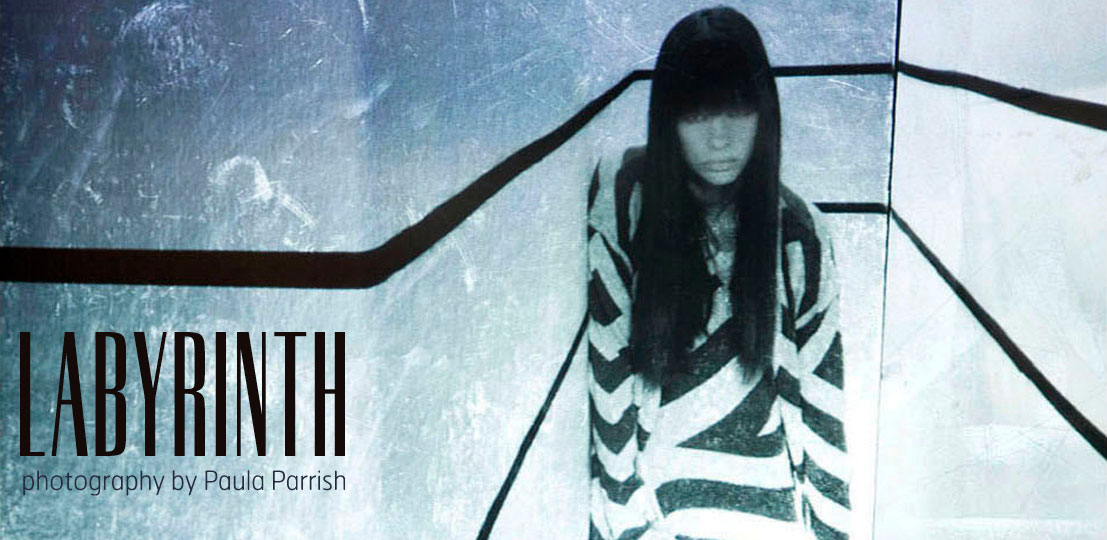

Interscope / N.E.E.T.

After months flying through space, the bad press meteor that is M.I.A. finally crashed on Earth as
/\/\/\Y/\ (Maya), her first new album since 2007’s
Kala, came out this week. But, instead of making a mind-blowing follow-up, and proving she has some substance beyond her frustrating public image, M.I.A. released a mess — an atonal collection of unpolished half-ideas that do little to push her forward artistically.
M.I.A. has always been kind of controversial. She’s outspoken about her relatively radical (and sometimes misinformed) political views, feelings about other, more mainstream, artists, and her own musical abilities. So yeah, she’s annoying. With a new record, though, M.I.A. has a platform, the only one that really matters, to show the world what she’s all about. And what does she do? Releases a song called “Teqkilla”, a messy party jam with the chorus, “I got sticky sticky icky icky weed/I got a shot of tequila in me.”
Audio clip: Adobe Flash Player (version 9 or above) is required to play this audio clip. Download the latest version here. You also need to have JavaScript enabled in your browser.
Buy this album at iTunes.
(more…)

Photography courtesy of Mad Decent

“I thought it was the apocalypse,” says Diplo. That is how the Grammy-nominated DJ/producer describes attending a baile funk party in Rio de Janeiro, a culture and city he immersed himself in to film his documentary, Favela On Blast. There — “at the end of the world” — the pavement gave way to dirt paths even the police feared crossing; a redheaded man holding a machine gun stood next to his Black brother, while another man wired the electricity for a congregation decked out with a hefty sound-system.
According to Diplo (whose real name is Wesley Pentz), baile funk developed on its own without a guiding hand from the record industry. During a 2004 Hollertronix show in Philadelphia, two Argentine girls handed him a cassette. “It was like a Smiths record looped up, like an 80s record, a little kid screaming over the top and heavy bass drums and all this surface noise,” Diplo recalls. “I thought it was the best music I had ever heard.” With no information on the hybrid of heavy metal and Miami bass readily available in these early days of the Internet, Diplo headed to Brazil to conduct his own investigative research. Once he was initiated into the often dangerous and drug-laden scene, he felt as if the blend of people coming together made it seem like “all the things bad in the world — European colonization, African immigration, and the industrial revolution — were all set right.”
(more…)

Photography by Swoon

Monday at 4:53 p.m. marked six months since a massive earthquake devastated Haiti, and the moment passed with relative media silence. In the half-year since the destruction, western media outlets have turned their eyes elsewhere while Haiti still grimly struggles to recover. Now, with the threat of hurricane season looming, the lingering effects of the disaster — 1.5 million people are living in temporary camps near Port-au-Prince, and services are reportedly unable to reach large portions of the affected population — threaten to become even worse.
In response, Thomas Beale of Honey Space has organized an event alongside leading NGOs, artists, and grassroots organizations working in Haiti “to share their insights into what’s happening on the ground, what projects are really making a difference, and how we can support them”. Presentations and discussions about the current state, and future, of the relief effort in Haiti start at 7 p.m., to be followed by a silent auction and DJ.
When asked what prompted the effort, Beale responded, “We organized this event to at least try to understand what life is like six months after such an apocalypse, what many are doing to help, what we can do.”
A PICTURE OF HAITI: 6 MONTHS LATER opens tonight at 6:30 p.m. at Honey Space, 148 11th Ave. (btw 21st and 22nd), New York. RSVP for the event here.
(more…)
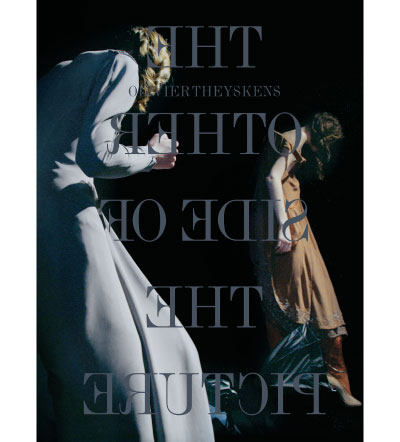
Photography by Julian Claessens (Click images to enlarge)

Released this spring by Assouline, Olivier Theyskens: The Other Side of the Picture features beautiful behind-the-scenes photographs by Julian Claessens, which capture Olivier Theyskens rapid, international ascension as a fashion designer. Theyskens dropped out of design school at the age of twenty to design his first collection in 1997, for which publications such as Women’s Wear Daily, The New York Times, and Harper’s Bazaar noted his singular talent. Later that year, Madonna even wore one of his dresses to the Oscars. In the thirteen years since, Theyskens has revamped the house of Rochas and moved on to become artistic director of Nina Ricci.
Claessens’ photographs explore the variety and careful skill in Theyskens’ designs, while simultaneously exposing the intimate moments, craftmanship, and authenticity behind the veneer of a fashion show. The book is a valuable read not only for its lush overview of Theyskens’s unusual, revolutionary career but also for the thoughtful layer it adds to our occasionally all-too-superficial perception of the fashion world.
Olivier Theyskens: The Other Side of the Picture is available for purchase at www.shopassouline.com.
(more…)
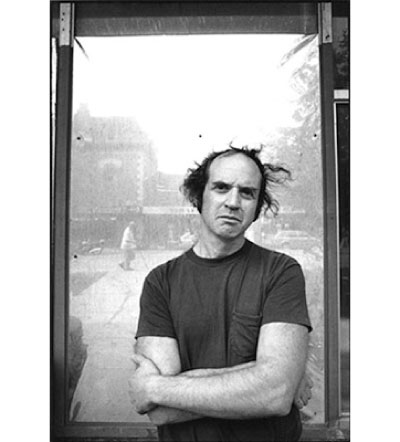

American writer Harvey Pekar died July 12 in his Ohio home. He was 70. Pekar is best known for his autobiographical comic series, “American Splendor”, which narrates the everyday life of Pekar and his fellow Cleveland residents. Pekar won the American Book Award in 1987 for his first series of American Splendor. In 2003, the film adaption won the Grand Jury Prize for dramatic films at the Sundance Film Festival. Over the years, several well-respected illustrators collaborated with Pekar on the comic series. The most notable, R. Crumb, was a personal friend who met Pekar while working at American Greetings in Cleveland during the 1960s. He encouraged Pekar to explore comics as a medium for his writing.
Unlike comics chronicling tales of superheroes, villains and their fantastical battles, Pekar detailed the stories of a different kind of hero: the everyday, working class man who battles depression, loneliness and anxiety while attempting to preserve soul, pride and authenticity. Both ordinary and extraordinary, Pekar will be remembered for his humor, honesty and gift to narrate what he described best as “a series of day-after-day activities that have more influence on a person than any spectacular or traumatic event. It’s the 99 percent of life that nobody ever writes about.”
In a week in which the media focuses on the departure of an athlete from Northeast Ohio, it is the man who R.Crumb called “the soul of Cleveland” who will truly be remembered and missed.

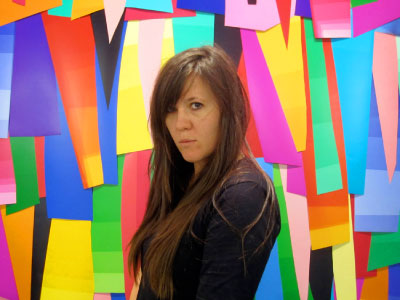
Kathy Grayson


On June 26, New Yorkers, art followers, and lovers of the purely weird finally got their answer to the question: What Happens After Deitch? Come what may, intentional gaps and accidents aplenty, the show goes on — at the Hole gallery on 104 Greene Street in SoHo. Run by Kathy Grayson and Meghan Coleman, both former directors of the newly defunct Deitch Projects, the Hole has valiantly stepped in to fill the fissures left behind by their iconic predecessor with experimental art shows, events, a book store and all-around mayhem. First up is the aptly named
Not Quite Open for Business, a conceptual group show of unfinished work by twenty-plus artists including the likes of Barry McGee, Aurel Schmidt, Rosson Crow, Jules de Balincourt, and Terence Koh. Each artist almost gave it their all for the gallery installation, fearlessly designed by Taylor McKimens. Nearly-there poems, long-neglected art, broken symphonies and other half-realized ideas; how come no one thought of this sooner? PLANET spoke to Kathy Grayson about how it all (sort of) came together.
Can you tell me a little bit more about the show? The inspiration seems clear enough, but what pushed you to think of it as a viable idea?
The idea of showing unfinished work popped into my head first. But the fact that I knew Taylor McKimens could tackle a really blockbuster installation design sealed it. Just showing unfinished work wasn’t enough, the space had to be designed by an artist and the only person who could have done it was Taylor.
(more…)



Our old pals in Murder Mystery have kicked off the summer season with a couple of one-off releases. These new tracks offer an insight into a slightly new direction for this Brooklyn four-piece. The sprawling guitars that dominated 2007’s Are You Ready for the Heartache Cause Here it Comes and evoked comparisons to Pavement have been superceded by an easygoing electro-pop aesthetic. Over a buoyant set of synths and beats, siblings Jeremy and Laura Coleman take turns on the microphone for melodies that recall Stars and Belle & Sebastian. “I Am (If You Are)” and “Change My Mind” show a band brandishing its verstaility and, we hope, revealing a promising new sound for their next full-length.
Audio clip: Adobe Flash Player (version 9 or above) is required to play this audio clip. Download the latest version here. You also need to have JavaScript enabled in your browser.
Audio clip: Adobe Flash Player (version 9 or above) is required to play this audio clip. Download the latest version here. You also need to have JavaScript enabled in your browser.
Both tracks are downloadable at murdermysterymusic.com. Buy Are You Ready for the Heartache… at iTunes. Murder Mystery will be playing with Food Will Win the War at Brooklyn’s Knitting Factory on July 18.

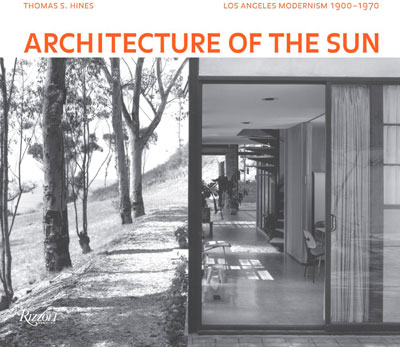
©Thomas S. Hines, Architecture of the Sun, Rizzoli, 2010. All images courtesy of Rizzoli. (Click images to enlarge)
 California modernism, which gave rise to stunning works by Rudolf Schindler, Richard Neutra, and Charles and Rae Eames, is often overshadowed by its better-celebrated East Coast and European counterparts. So Thomas S. Hines’ new compendium of modern buildings in Los Angeles, Architecture of the Sun, is a welcome corrective.
California modernism, which gave rise to stunning works by Rudolf Schindler, Richard Neutra, and Charles and Rae Eames, is often overshadowed by its better-celebrated East Coast and European counterparts. So Thomas S. Hines’ new compendium of modern buildings in Los Angeles, Architecture of the Sun, is a welcome corrective.
Hines is a well-known architectural historian who tracks design developments thoughtfully, but his real achievement here is the astounding collection of photographs and drawings he’s assembled. Unlike in other cities, in Los Angeles many influential modern structures were small houses and stores that were particularly vulnerable to the vagaries of the market, and also fires and earthquakes. The book brings some of those long-gone buildings back to life, and brings works by less celebrated architects such as Irving Gill and Raphael Soriano to the forefront.
In many ways Los Angeles was the perfect ground for modern building. Its open, undeveloped landscape, temperate weather, and dry climate lent itself to a spacious, inside-outside architecture that was less concerned with planning and weatherproofing than with sculptural expression.
(more…)
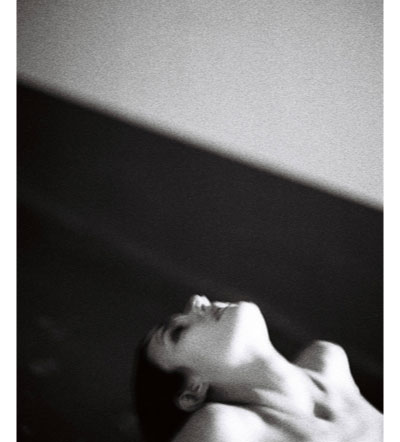
Photography by Romina Shama (Click images to enlarge)

 Romina Shama
Romina Shama is a film director and fashion photographer based in Europe. Her work boasts a distinctly soft, cinematic style as a result of her sole reliance on natural light and an analog camera. Formerly co-creative director of the now-defunct Icon Magazine, Shama has devoted herself since the magazine’s closing in 2005 exclusively to her art. Her current show is on display at
Visionairs Gallery Paris through July 9.
(more…)






 Facebook
Facebook Permalink
Permalink Digg
Digg Reddit
Reddit LinkedIn
LinkedIn StumbleUpon
StumbleUpon Tumblr
Tumblr




